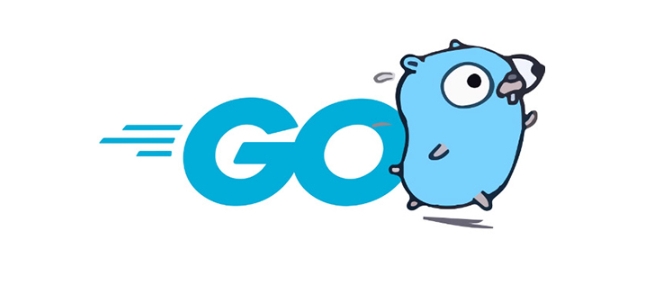The purpose of select plus default is to allow select to perform default behavior when no other branches are ready to avoid program blocking. 1. When receiving data from the channel non-blocking, if the channel is empty, it will directly enter the default branch; 2. In combination with time.After or ticker, try to send data regularly, and skip it if the channel is full; 3. Prevent deadlocks, avoid program stuck when it is uncertain whether the channel is closed; when using it, please note that the default branch will be executed immediately and cannot be abused, and default and case are mutually exclusive and will not be executed at the same time.

In Go language, select statement is used to wait for multiple communication operations to complete. It's much like switch , but each case is a communication (channel operation). After adding the default branch, you can let select perform the default behavior when no other branches are ready.

What is the function of select plus default ?
select in Go is usually used to listen to read and write operations of multiple channels. Once one of the channels is ready, the corresponding case will be executed. But if all channels are not ready, the program will block by default until a channel is ready.
At this time, adding a default branch can break this blocking behavior. When no channel can communicate, the logic in default is executed. This is very useful in some scenarios, such as non-blocking checking channel state, avoiding deadlocks, or implementing polling mechanisms.

Common scenarios of using select default
1. Receive data from the channel non-blocking
Sometimes you don’t want to wait forever, but hope “if you have data to read now, forget it if you don’t have it.” At this time, you can use select default :
select {
case msg := <-ch:
fmt.Println("Message received:", msg)
default:
fmt.Println("No message currently")
} In this way, even if the channel is empty, the program will not be stuck, but will directly enter the default branch.

2. Timed polling or attempting to send data
You can combine time.After or ticker to try to do something regularly without blocking the main thread:
select {
case ch <- "Try to send":
fmt.Println("Sent successfully")
default:
fmt.Println("channel is full, can't be sent for the time being")
}In this example, if the channel is full, it will not block, but will skip directly.
3. Prevent select deadlock
In some concurrency logic, if you are not sure if the channel will be closed or if there is a goroutine running, you can use default to avoid deadlocks:
done := make(chan bool)
go func() {
// Close done after doing something
time.Sleep(time.Second)
close(done)
}()
select {
case <-done:
fmt.Println("Task Complete")
default:
fmt.Println("Not finished yet")
} If there is no default here and the done channel has not been closed, the program will be stuck.
Several details to pay attention to when using
-
defaultbranch will be executed immediately when no channel is ready. - Don't abuse
defaultor it may mask the real blocking problem. - If you want to choose one of multiple channels first, you can nest it multiple times or use it with
forloop. -
defaultandcaseare mutually exclusive and will not be executed at the same time.
Give an example to illustrate the execution order:
ch1 := make(chan string)
ch2 := make(chan string)
go func() {
time.Sleep(100 * time.Millisecond)
ch1 <- "From ch1"
}()
select {
case msg := <-ch1:
fmt.Println(msg)
case msg := <-ch2:
fmt.Println(msg)
default:
fmt.Println("None is ready")
}This code is likely to output "non-prepared" first, because neither channel is ready yet. But after a few milliseconds, ch1 will receive a value, but select has been executed, so it will not fall back and try again.
Let's summarize
select default is a flexible way to control channel behavior, especially suitable for scenarios where you don't want to get your program stuck. Although the structure is simple, it is important to understand its execution timing and scope of application.
Basically, that's all. If you master these points well, it will not be easy to make mistakes when you use them.
The above is the detailed content of Go select with default case. For more information, please follow other related articles on the PHP Chinese website!

Hot AI Tools

Undress AI Tool
Undress images for free

Undresser.AI Undress
AI-powered app for creating realistic nude photos

AI Clothes Remover
Online AI tool for removing clothes from photos.

Clothoff.io
AI clothes remover

Video Face Swap
Swap faces in any video effortlessly with our completely free AI face swap tool!

Hot Article

Hot Tools

Notepad++7.3.1
Easy-to-use and free code editor

SublimeText3 Chinese version
Chinese version, very easy to use

Zend Studio 13.0.1
Powerful PHP integrated development environment

Dreamweaver CS6
Visual web development tools

SublimeText3 Mac version
God-level code editing software (SublimeText3)

Hot Topics
 How does the switch statement work in Go?
Jul 30, 2025 am 05:11 AM
How does the switch statement work in Go?
Jul 30, 2025 am 05:11 AM
Go's switch statement will not be executed throughout the process by default and will automatically exit after matching the first condition. 1. Switch starts with a keyword and can carry one or no value; 2. Case matches from top to bottom in order, only the first match is run; 3. Multiple conditions can be listed by commas to match the same case; 4. There is no need to manually add break, but can be forced through; 5.default is used for unmatched cases, usually placed at the end.
 how to break from a nested loop in go
Jul 29, 2025 am 01:58 AM
how to break from a nested loop in go
Jul 29, 2025 am 01:58 AM
In Go, to break out of nested loops, you should use labeled break statements or return through functions; 1. Use labeled break: Place the tag before the outer loop, such as OuterLoop:for{...}, use breakOuterLoop in the inner loop to directly exit the outer loop; 2. Put the nested loop into the function, and return in advance when the conditions are met, thereby terminating all loops; 3. Avoid using flag variables or goto, the former is lengthy and easy to make mistakes, and the latter is not recommended; the correct way is that the tag must be before the loop rather than after it, which is the idiomatic way to break out of multi-layer loops in Go.
 Using the Context Package in Go for Cancellation and Timeouts
Jul 29, 2025 am 04:08 AM
Using the Context Package in Go for Cancellation and Timeouts
Jul 29, 2025 am 04:08 AM
Usecontexttopropagatecancellationanddeadlinesacrossgoroutines,enablingcooperativecancellationinHTTPservers,backgroundtasks,andchainedcalls.2.Withcontext.WithCancel(),createacancellablecontextandcallcancel()tosignaltermination,alwaysdeferringcancel()t
 Building Performant Go Clients for Third-Party APIs
Jul 30, 2025 am 01:09 AM
Building Performant Go Clients for Third-Party APIs
Jul 30, 2025 am 01:09 AM
Use a dedicated and reasonably configured HTTP client to set timeout and connection pools to improve performance and resource utilization; 2. Implement a retry mechanism with exponential backoff and jitter, only retry for 5xx, network errors and 429 status codes, and comply with Retry-After headers; 3. Use caches for static data such as user information (such as sync.Map or Redis), set reasonable TTL to avoid repeated requests; 4. Use semaphore or rate.Limiter to limit concurrency and request rates to prevent current limit or blocking; 5. Encapsulate the API as an interface to facilitate testing, mocking, and adding logs, tracking and other middleware; 6. Monitor request duration, error rate, status code and retry times through structured logs and indicators, combined with Op
 how to properly copy a slice in go
Jul 30, 2025 am 01:28 AM
how to properly copy a slice in go
Jul 30, 2025 am 01:28 AM
To correctly copy slices in Go, you must create a new underlying array instead of directly assigning values; 1. Use make and copy functions: dst:=make([]T,len(src));copy(dst,src); 2. Use append and nil slices: dst:=append([]T(nil),src...); both methods can realize element-level copying, avoid sharing the underlying array, and ensure that modifications do not affect each other. Direct assignment of dst=src will cause both to refer to the same array and are not real copying.
 Working with Time and Dates in Go
Jul 30, 2025 am 02:51 AM
Working with Time and Dates in Go
Jul 30, 2025 am 02:51 AM
Go uses time.Time structure to process dates and times, 1. Format and parse the reference time "2006-01-0215:04:05" corresponding to "MonJan215:04:05MST2006", 2. Use time.Date(year, month, day, hour, min, sec, nsec, loc) to create the date and specify the time zone such as time.UTC, 3. Time zone processing uses time.LoadLocation to load the position and use time.ParseInLocation to parse the time with time zone, 4. Time operation uses Add, AddDate and Sub methods to add and subtract and calculate the interval.
 How to use template.ParseFS with go embed?
Jul 30, 2025 am 12:35 AM
How to use template.ParseFS with go embed?
Jul 30, 2025 am 12:35 AM
Use the template.ParseFS and embed package to compile HTML templates into binary files. 1. Import the embed package and embed the template file into the embed.FS variable with //go:embedtemplates/.html; 2. Call template.Must(template.ParseFS(templateFS,"templates/.html")))) to parse all matching template files; 3. Render the specified in the HTTP processor through tmpl.ExecuteTemplate(w,"home.html", nil)
 How to import a local package in Go?
Jul 30, 2025 am 04:47 AM
How to import a local package in Go?
Jul 30, 2025 am 04:47 AM
To import local packages correctly, you need to use the Go module and follow the principle of matching directory structure with import paths. 1. Use gomodinit to initialize the module, such as gomodinitexample.com/myproject; 2. Place the local package in a subdirectory, such as mypkg/utils.go, and the package is declared as packagemypkg; 3. Import it in main.go through the full module path, such as import "example.com/myproject/mypkg"; 4. Avoid relative import, path mismatch or naming conflicts; 5. Use replace directive for packages outside the module. Just make sure the module is initialized






